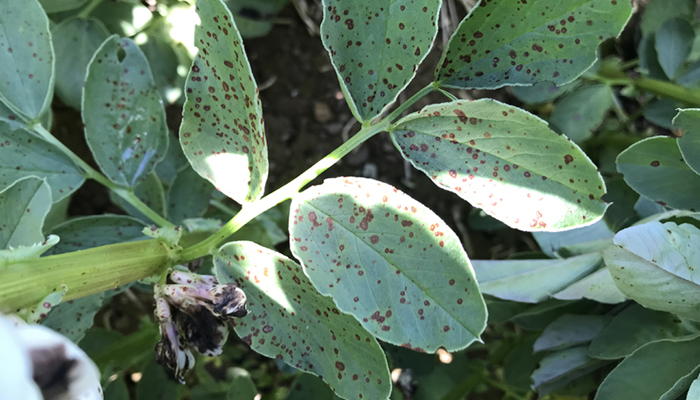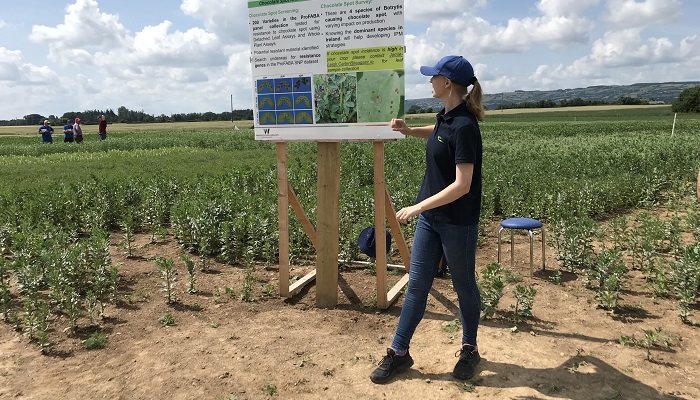28 June 2023
Finding alternatives to chemicals for chocolate spot

Chocolate spot is the main disease of faba beans in Ireland, often developing in the presence of moisture and warm weather. At the recent Teagasc Crops Open Day, Jamie-Leigh Carter provided an update on her research work, which is looking for chocolate spot resistance.
Jamie-Leigh explained: “The main treatment for chocolate spot is a fungicide programme and that often involves two or more applications. We are trying to move away from that dependence on chemicals and incorporate resistance into durable varieties that can withstand Irish conditions.”
To identify these, 200 varieties in the ProFaba panel are being collected and tested for resistance to chocolate spot using detached leaf and whole plant studies.
“At the moment, the resistant varieties that we found are not going to grow very well in Ireland off the bat, so we are trying to find those genetic markers and incorporate them into new breeding strategies for resistant lines.
“In order to achieve this, we are screening 200 lines of faba bean for resistance and we are doing that on several different scales. We’re starting in the lab with the detached leaf studies, moving up to the control conditions in the glasshouse and, from there, we select varieties that will give resistance in the field,” Jamie-Leigh said. Once at field level, the field will be inoculated with chocolate spot to see how resistant varieties respond. If such varieties can be developed, it would help reduce the dependence on chemicals to tackle this disease.

Jamie-Leigh Carter presenting at the Teagasc Crops Open Day in Oak Park on June 21.
Along with identifying and employing resistant varieties, the second area of Jamie-Leigh’s work involves characterising the fungus causing the disease present in Ireland.
She said: “In Europe, they have found four strains of Botrytis causing the disease and, at the moment, we don’t know if all four of those are contributing here in Ireland. It will be really important to know that in terms of fungicide treatments because these will develop fungicide resistance at different rates. We are building a library of isolates from growers right across Ireland, pinpointing down what species we actually have and then using that library in the future to test fungicide sensitivity on a broad scale and also comprehensive resistance testing for all the species,” Jamie-Leigh concluded.
Also read: Highlights from the Teagasc Crops Open Day
Also read: Responding to growers’ needs through oat research
Also read: Back to the future – developing new avenues for oats
Also read: A solution to the pea crop’s Achilles’ heel?
Also read: Developing better tools for the forecasting and control of BYDV
